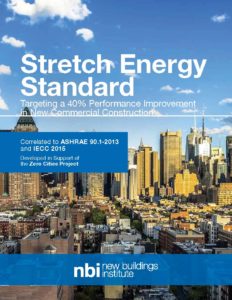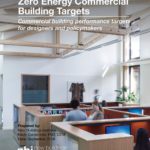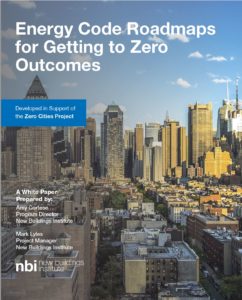Zero Cities Project
Codes And Policy / Energy Codes
 The Zero Cities Project is a three-year project supporting both cities and their most impacted communities* to co-develop and implement actionable and equitable roadmaps and policy strategies to achieve a zero-net-carbon (ZNC) building sector by 2050. Through a community collaboration process that aims to lead with equity and is informed by technical analysis, the project will create shared roadmaps, a suite of tools, and a refined, replicable planning model to support a broad network of cities in achieving a ZNC building sector.
The Zero Cities Project is a three-year project supporting both cities and their most impacted communities* to co-develop and implement actionable and equitable roadmaps and policy strategies to achieve a zero-net-carbon (ZNC) building sector by 2050. Through a community collaboration process that aims to lead with equity and is informed by technical analysis, the project will create shared roadmaps, a suite of tools, and a refined, replicable planning model to support a broad network of cities in achieving a ZNC building sector.
The Zero Cities project team integrates expertise from the Urban Sustainability Directors Network/Carbon Neutral Cities Alliance, Architecture 2030, New Buildings Institute, Race Forward, Movement Strategy Center, and Resource Media.
* Low-income people of color, women, indigenous, LGBTQ+, elderly, young, and disabled people etc.
Energy Code and Policy Guidance
In support of this project, NBI has developed the following resources. The two sets of advanced code measures might be applied as stretch codes or advanced energy policies by cities interested in pushing forward code and policy measures to support improved building performance. Cities which control their own code destiny (meaning they can adopt energy codes at the city level) can use part or all of the measures described in these documents to increase code stringency or adopt a stretch code strategy with incentives. For jurisdictions that are not able to adopt codes outside of a state process, the stretch code strategies could be used as part of a zoning policy or in conjunction with utility or other incentives.
 20% Stretch Code Provisions
20% Stretch Code Provisions
The 20% Stretch Code Provisions describe a set of code strategies that represent a 20% performance improvement for commercial buildings over the ASHRAE 90.1-2013 code baseline (and approximately similar savings over the IECC 2015 baseline). For additional information on the 20% Stretch Code review a summary here or watch our webinar.
20% Stretch Code
 40% Stretch Standard
40% Stretch Standard
The 40% Stretch Energy Standard is a set of stretch code strategies that target 40% better efficiency than current national model energy codes. Borrowing lessons from low and zero energy (ZE) buildings, we understand that it is possible to design and construct buildings that achieve at least a 40% energy reduction with design approaches that are being practiced today and technologies that are readily available. The 40% Stretch Energy Standard can serve as a bridge between highly prescriptive energy codes and the more descriptive technical guidance used to explain fundamental approaches to ultra-low and zero energy buildings.
40% Stretch Standard
Zero Energy Commercial Building Targets
The critical first step in achieving a zero energy building is to set an energy use target. This white paper helps define appropriate goals for these ultra-low energy buildings, which often surpass even the most stringent energy codes in place today. Designers, policymakers, and owners who are targeting zero energy buildings, whether for energy cost savings, carbon savings, occupant wellness, overall sustainability, or even status can look to this guidance to answer the crucial first question: “Where do I start?”
Zero Energy Commercial Building Targets
Energy Code Roadmap for Getting to Zero Outcomes
Advanced energy codes are an important policy mechanism to advance energy efficiency and integrate renewables into the built environment. Energy code roadmaps lay the groundwork by identifying the order and priorities necessary for subsequent code improvements on the path to zero energy and zero carbon emissions. This roadmap document highlights code and policies mechanisms that can be leveraged by cities and states interested in pursuing outcome-based building policies.
Energy Code Roadmap
